A convoluted (and somewhat disjointed) tale that dovetails my interests in evolution, Darwin and birds.
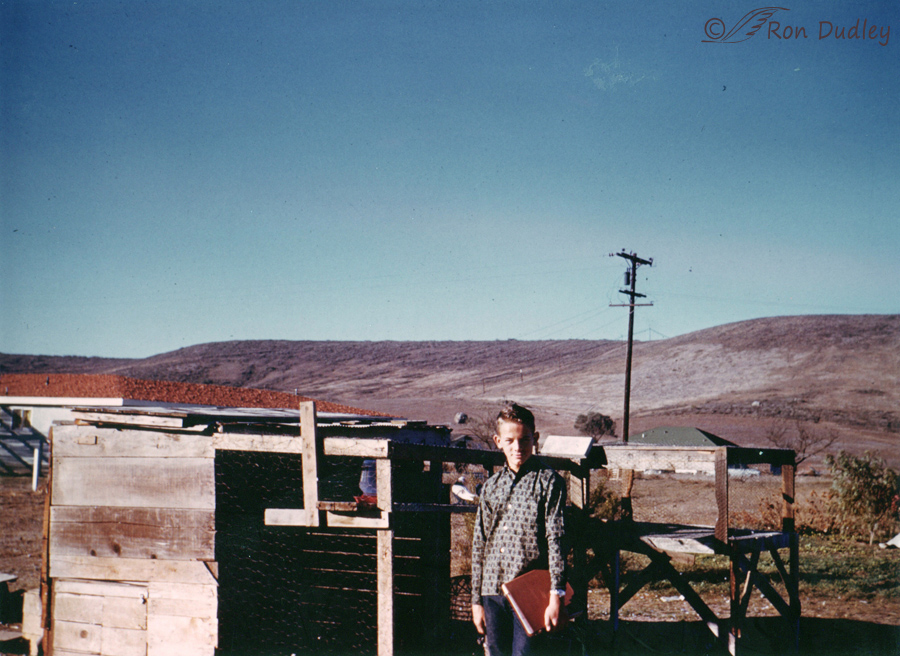
From an earlier post readers already know that as a pre-teen and young teenager I had an intense fascination with pigeons. I raised a variety of breeds including homers, rollers, tumblers, tipplers, helmets and fantails. Even at that age my interest bordered on academic. Here I am in front of my pigeon coop (1959?) which was made from scraps and was my first of many carpentry projects over the decades. I’m holding a book titled “The Pigeon” by Wendell M. Levi.
“The Pigeon” was a highly technical book for someone my age but I devoured it, over and over, and it included a chapter on Charles Darwin’s work with domestic pigeons. Darwin bred pigeons in his garden, not as a hobby but as an experiment for his developing theory of evolution.
That was my first significant introduction to both Darwin and evolution and I was fascinated by both.
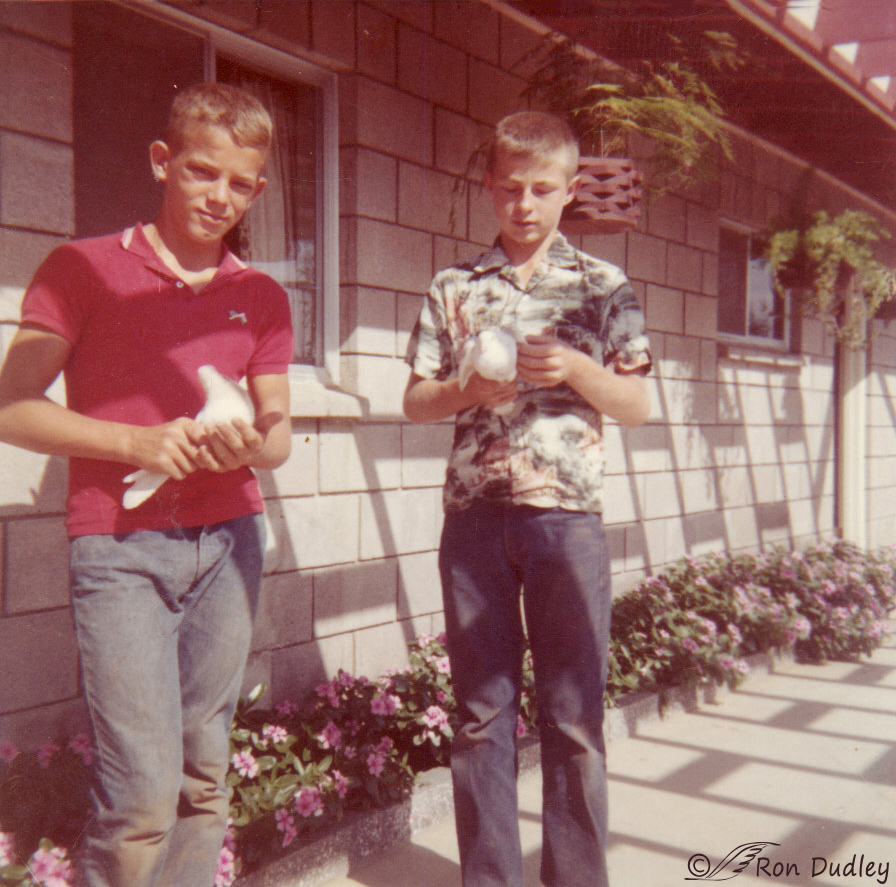
My good friend Dennis Ehlert and yours truly on the patio of my family’s Poway, California home holding a couple of our favorite pigeons. That’s me on the left. Dennis introduced me to pigeon raising and I’ll be forever grateful. So will my dear departed mother who strongly encouraged my addiction to pigeon raising in those years because she believed it “kept me out of trouble”. She was right, mostly.
OK, the next part of this post might seem a little fragmented and disorganized at first. I hope to connect all the pieces as we continue.
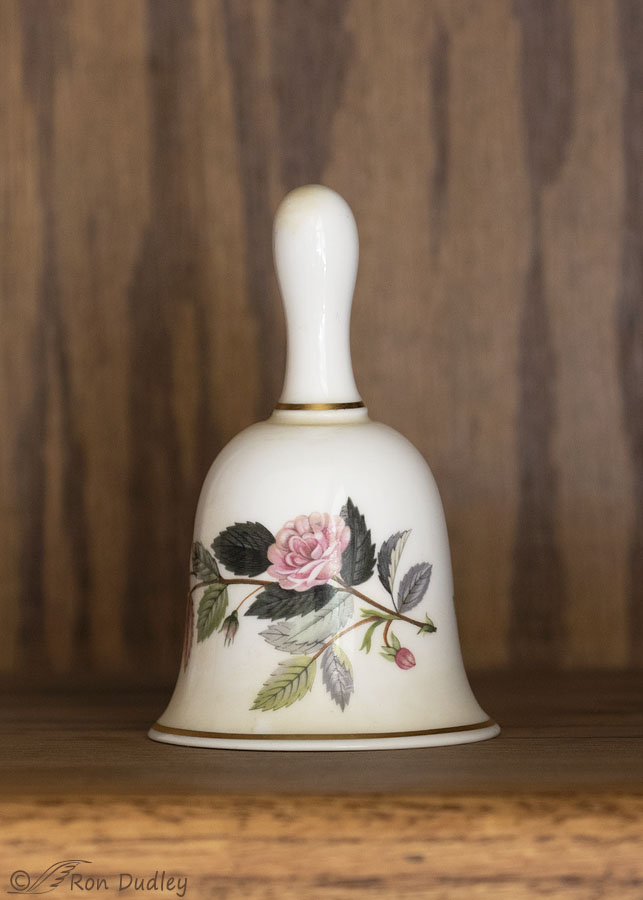
Wedgwood Bone China Hathaway Rose Bell
This is a fine bone china bell that I keep on a prominent shelf in a bookcase I built and installed in my living room. It might seem like a rather foofoo object for someone like me to have a near-obsession with but I’ll try to explain.
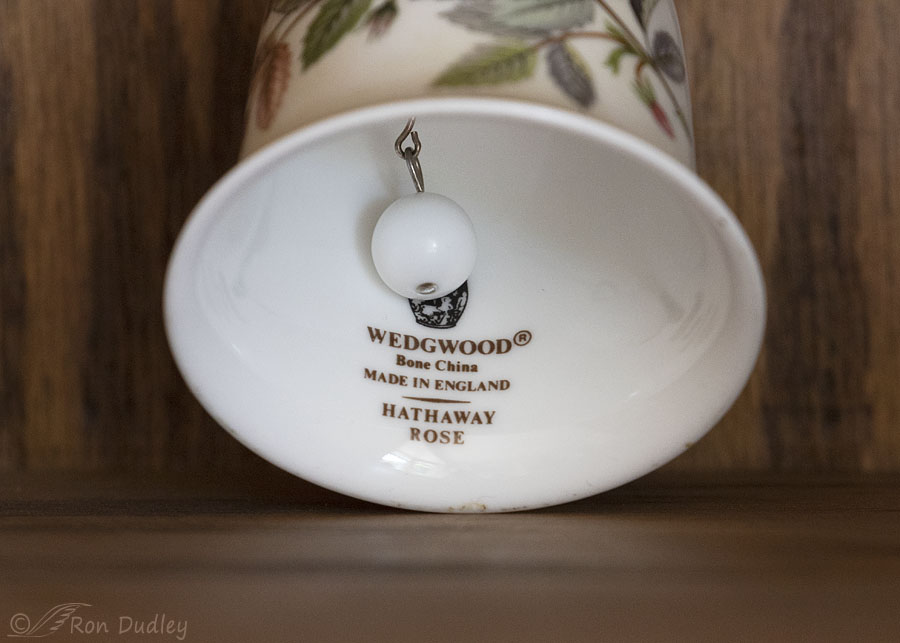
It’s a Wedgwood bell, produced by the renowned fine china and porcelain company founded in England by Josiah Wedgwood in 1759. I suspect some, possibly many, of my readers own Wedgwood china and/or porcelain.
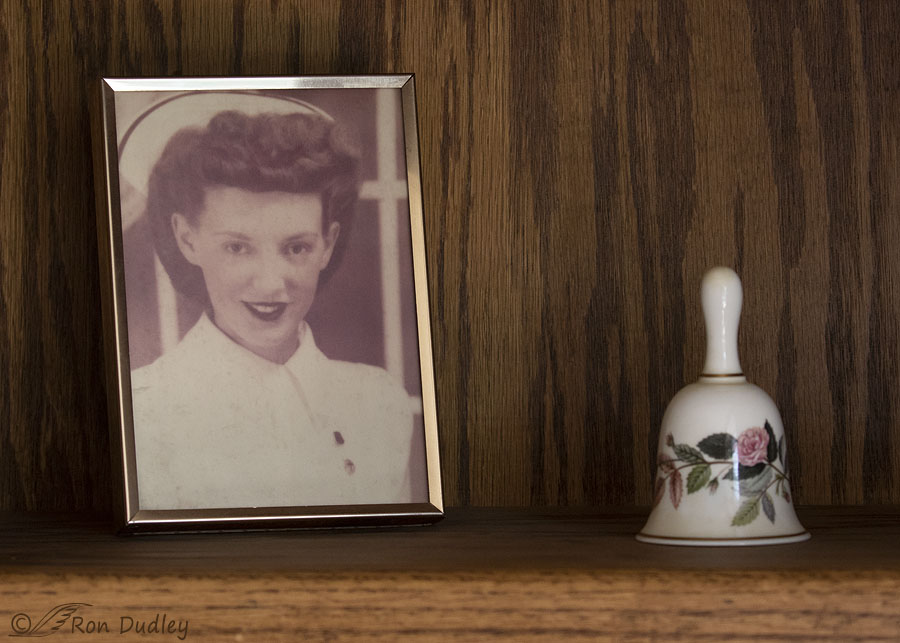
I inherited the bell from my mother so I keep it right next to a photo taken of her on the occasion of her graduation from nursing school as an RN in Calgary, Alberta in about 1944.
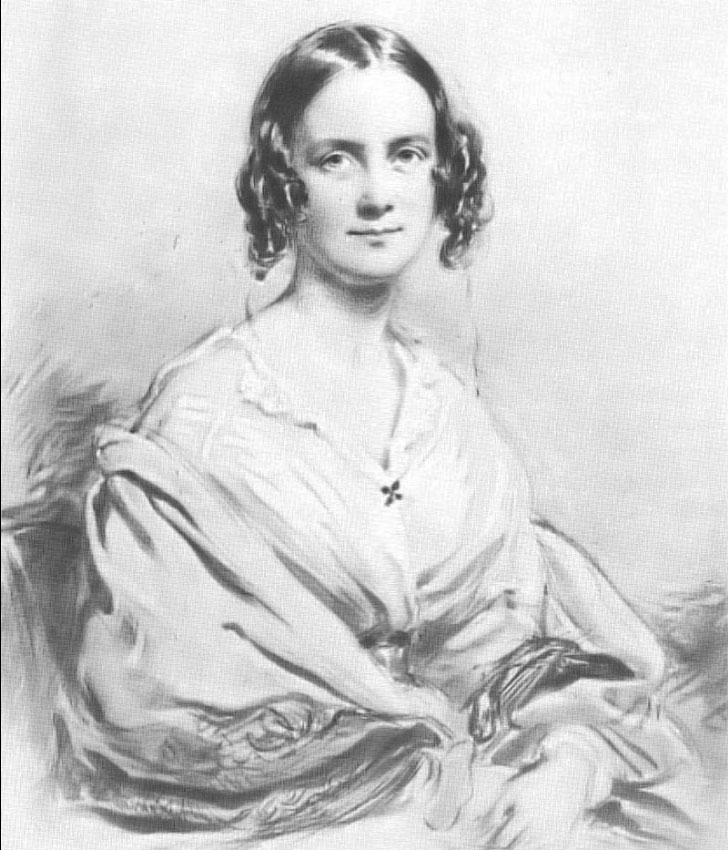
Emma Wedgwood 1840
This is Emma Wedgwood. Emma was the youngest child of Josiah Wedgwood II, son of Josiah Wedgwood of fine china and porcelain fame.
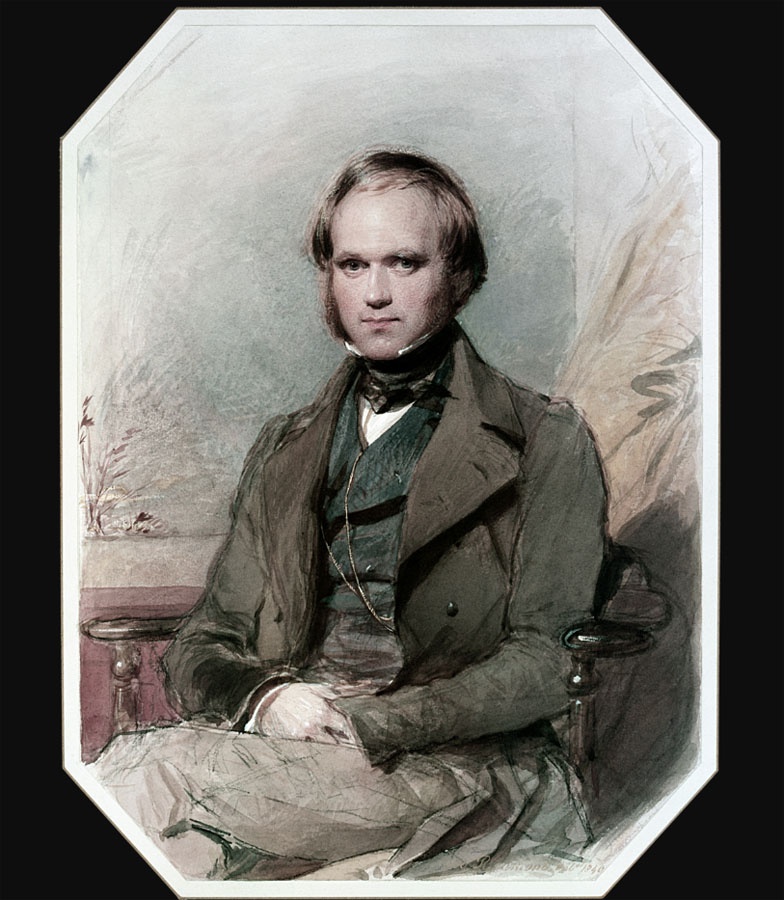
Charles Darwin, late 1830’s.
You may have seen this coming, Emma Wedgwood married Charles Darwin in 1839.
So for me that fact completes an almost perfect circle that encloses my interests in Darwin, evolution and pigeons and birds and connects them to the Wedgwood bell I inherited from my mother who nurtured my fascination with pigeons. It may be a convoluted connection but it’s there and it’s the reason I’m so fond of that silly (for me) bell.
But part of the extended story gets a little weird. Darwin famously wrote about how crossbreeding produces robust offspring (the well known ‘hybrid vigor’) while inbreeding tends to produce genetic weakness and/or disease in the offspring.
It turns out that Darwin and Emma were first cousins. They had ten children but three of them died by the age of 10 and three others were childless even though they had long-term marriages. Several recent and not so recent studies strongly suggest that the reason for the high mortality rate and low fecundity rate in the Darwin children was because they were inbred.
Ironic, don’t you think?
Darwin actually worried about that possibility, especially when his first daughter Annie died at age 10. Annie was known to be his favorite child and he was devastated by her loss.
Even all these years later I feel sorry for Charles and Emma, in part because I’m sure that in their later years they were fully aware of the tragic irony.
Ron


Very interesting post Ron. I’m just a few years older but I was transported back by our similar younger years. I was a teen in the San Fernando Valley and also loved biology. My friend next door had some pigeons but aviation and building model airplanes held most of my interest–even joined the Air Force where I was trained to be a lab specialist; after 4 years I went to the U to become a Medical Technologist BS (ASCP). My favorite classes involved biology and an appreciation of Darwin. Thanks!
An excellent little diversion. Try reading Jonathon Weiner’s ‘The Beak of the Finch’ about the Grant’s long term studies in the Galapagos Island for more on evolution and birds.
Of course in his later years Darwin wrote a letter of apology to his wife for any distress her had caused her in respect of his studies and beliefs and her religious convictions.
Best wishes.
Your titles always draw me in Couldn’t wait to read the story.
Couldn’t wait to read the story.
You’re lucky to have so many fond memories of your youth
I struggled with my title, Diana.. I had many variations before I settled on the final one.
I did know of the Wedgewood/Darwin connection. One of the books I often reread is Period Piece written by one of Darwin’s granddaughters about her relatives, which contains some fascinating snippets about the family. I still chuckle at the aunt who (after being unwell as a child) was told to have breakfast in bed for a time – and never got up to breakfast again. At least one of her uncles complained that the Darwins were ‘mostly Wedgewoods’.
And yes, I read ‘out of my age range’ as a child. And still refuse to be restrained by such arbitrary restrictions.
As always, thank you for this post.
PS: My fascination with the family continued when I (much later) read that the granddaughter who wrote Period Piece much later married someone with MS – and killed him (at his request) when the pain/disability became more than he could endure.
That sounds like an interesting book, EC. Interesting enough that I’m tempted to look into it.
What a fun post! I always enjoy learning more about your childhood. I love the way you wove the story together. I was another kid who read what I wanted to read, “reading levels” be damned. The bell is beautiful and the story behind it even better. I’ve always had a soft spot for Wedgwood Jasperware.
The bell is beautiful and the story behind it even better. I’ve always had a soft spot for Wedgwood Jasperware.
I knew that the Darwins were cousins (that was a fairly common occurrence at the time), but don’t think I knew that they were first cousins. The realization of the effect of their close genetic relationship on their children must have been devastating.
Thank you, Marty.
I do enjoy “connections” stories like this. You told it well. Yes, I was wondering where you were going but you completed the circle.
That object sitting on Emma’s lap looks like nothing so much as a bird to me.
Yes, it does look a little like a bird. I hadn’t even noticed it.
Again, just WOW! What a fascinating post and you clicked off my learn-something-new-every-day objective. I had NO idea of the Darwin/Wedgewood connection and basically any of Darwin’s personal life. How interesting to know that he married his first cousin KNOWING how that union would probably affect their children!
I heartily agree with Kris Eberhard! I was drawn to books that were above my supposed reading level as a child and no one stopped me! My mother had NO clue what I was reading. I don’t think she EVER read a book and she called me a “bookworm.” In her world, that was a very bad thing, especially in the context of attracting a husband. I stopped listening to her beyond the age of about five.
Conversely (and THANKFULLY) my father was a lifelong learner who fostered and rewarded my curiosity however it manifested itself. So my intellect was allowed to wander where it would. That continues to this day and it’s a very GOOD thing!
As for the Wedgewood connection, I also have a Wedgewood bell along with a Wedgewood tea set that I bought in one of my trips to England (my ex-husband was a Brit). Thankfully, it has survived my many cross-country moves since the early 70s! My grandmother had several Wedgewood pieces, but sadly they were sold after her death. Grumble!!
Thank you, Laura.
I’m curious, is your Wedgwood bell a Hathaway Rose like mine?
Yes it is Ron…sorry, I MEANT to mention that but got distracted!
I knew the story of Charles and Emma but this personal connection to you is fascinating. As always, I appreciate you sharing personal history because you are a fascinating guy as well. Thank you.
Ha, I don’t know about fascinating but I wouldn’t deny being a little… different. Thank you, Art.
Thank you, Art.
The title of this blog was a head scratcher for sure! A little mystery and irony. Thank you for always being informative, artistic, and entertaining with a dry wit. Love reading your blog every morning Ron.
Thank you on all three counts, Kathleen.
I did know Darwin’s wife came from the Wedgwood family , but I did not know they were cousins or that their children died. I believe my grandmother had blue Wedgwood china, my mother who regularly reads your posts might have to chime in about that. I have a few floral pieces of Wedgwood China to go with my pink depression glass dish sets from my grandmother and her sister. I always liked the Wedgwood nautical theme, but don’t have any.
I am glad you had an interest in pigeons, look where it took you.
“I am glad you had an interest in pigeons, look where it took you.”
I’ve very often had that same thought, April. If Dennis hadn’t introduced me to the joys of pigeon raising, who knows…
Thanks for all this Ron. Really interesting and reminded me of the crush I had on a couple of my cousins growing up…glad we all moved on! But as they say, birds of a feather do flock together.
Mary, the cousins I was closest to lived on a farm right next to ours so the three girls almost seemed like my sisters. No potential crushes there…
A really interesting post—I hadn’t known anything much about Darwin’s
personal life until this AM.
You caught my interest with your mention of the “highly technical” book
on pigeons–I think that bright, motivated kids are so often UNDERserved
by well-meaning children’s books–in my opinion, young people should be
encouraged to read the most advanced materials to which they are attracted.
That practice did a lot for me, and clearly for you, too !
Good point, Kris.
Parts of that book really challenged me but my interest in pigeons kept me hooked. It was actually a library book .I checked it out dozens of times. I’d take it back and then check it out again as soon as they’d let me. Mine was the only name on the library cards for that book for nearly 2 years.
Fascinating story, and to be honest, I was not aware that Charles and Emma were cousins let alone first cousins. And, I’ve been a Darwin fan for a very long time. Go figure!!
Its hard for some males to say they like bone china, but I think the blue Wedgwood is gorgeous! Unfortunately my mother sold all her china before she passed!
Dick, only minutes ago I told a friend that I’m especially attracted to the powdery blue Wedgwood pieces. My aunt Colleen, my mother’s sister, had quite a few of them and I’ve admired them for years.
Interesting! Think some folks confuse “crossbreeding” vs. “inbreeding” and, if one is careless they may intend to be doing the former and end up doing the latter. Wonderful how histories/scientific interests end up stringing together. Is sad for the family…….
Think some folks confuse “crossbreeding” vs. “inbreeding” and, if one is careless they may intend to be doing the former and end up doing the latter. Wonderful how histories/scientific interests end up stringing together. Is sad for the family…….
Judy, I was absolutely fascinated when I learned of the Darwin – Wedgwood connection. And that Charles and Emma were first cousins.
Very interesting post Ron. You look like your mother, and I looked just like your friend at that age. Same exact haircut. A post far astray from birds except for the pigeons, but fun to read. I remember my grandmother and a couple aunts had some Wedgwood China. I did not know that Darwin was married to a Wedgwood nor did I know anything about their children. My sister in law Marty who lives in Boston now grew up in Poway. I believe she is in her early 70’s so might be a little older than you.
Everett, I’m 73 so your sister in law and I may very well have attended Poway Junior High School at the same time. Maybe we even knew each other.
I will check